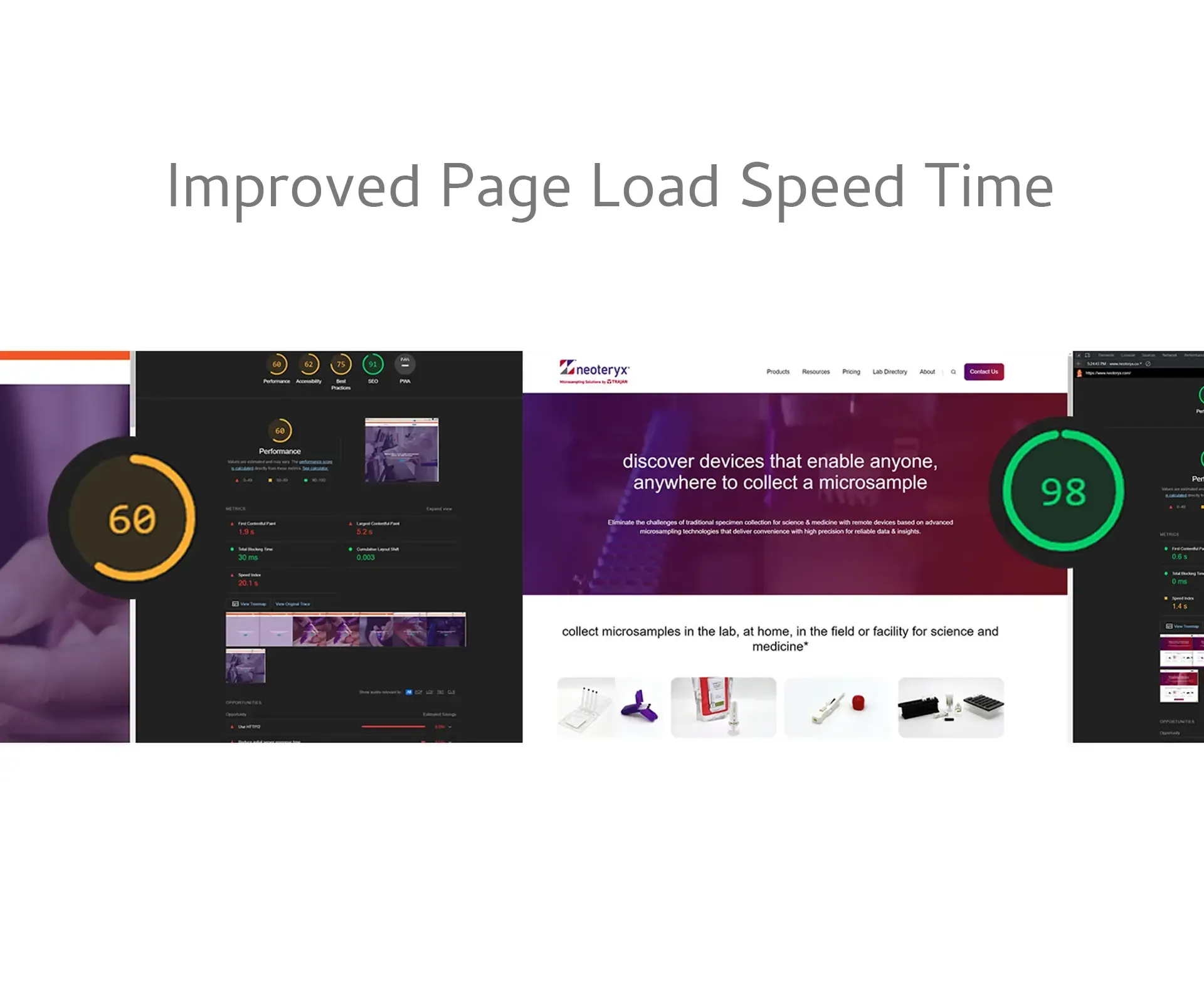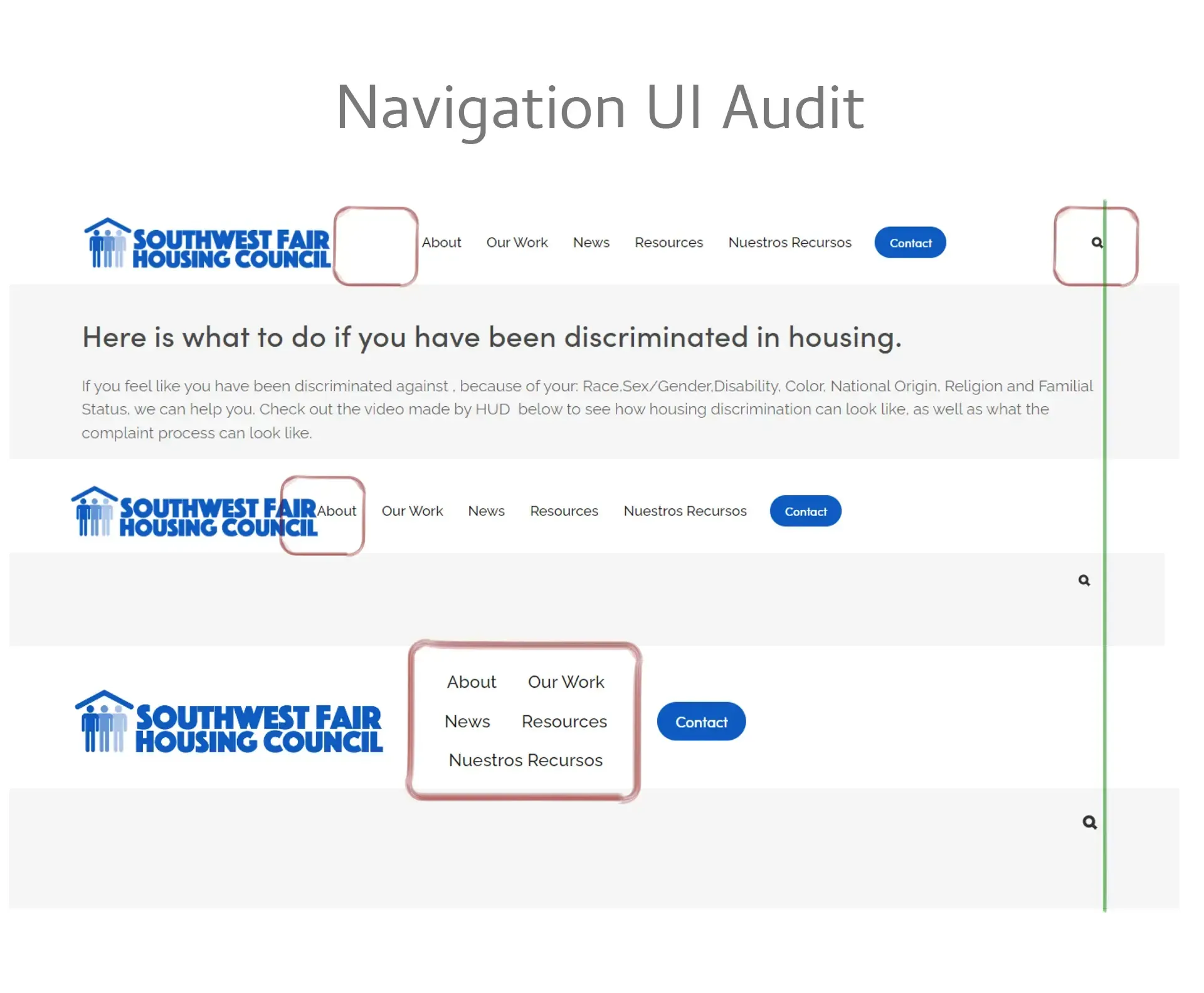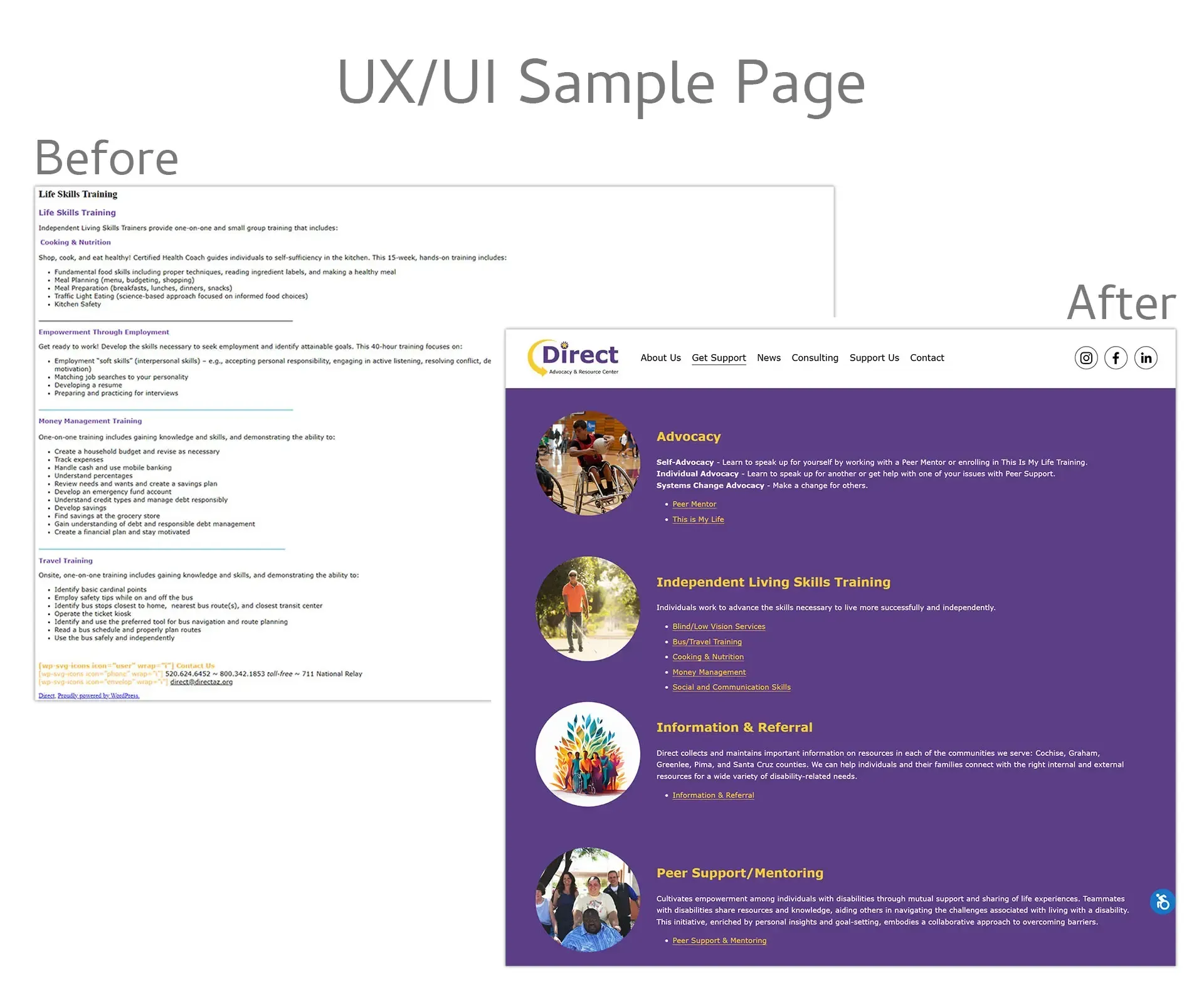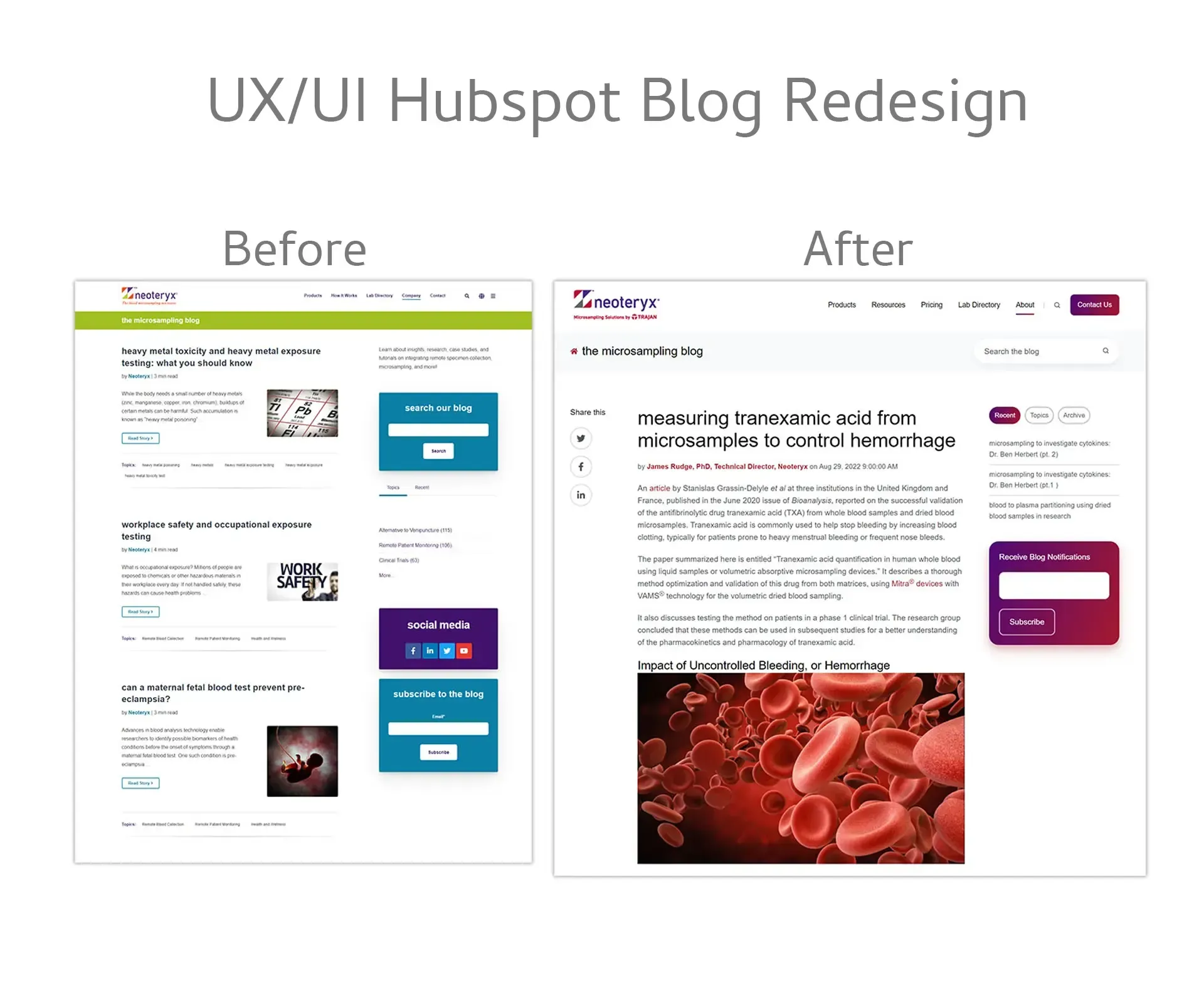Modern UX/UI Design
Equal Parts Design+Technical SEO
Modern audiences are impatient. Search engines are more unforgiving, making UX (User Experience) and UI (User Interface) increasingly important. Your website not only has to look good but load quickly, while clearly reflecting your brand's identity. My approach blends lightweight technical SEO foundations with adaptive design principles to build intuitive interfaces.
#1 Design Principles Founded on Technical SEO
In today's landscape, effective web-design focuses on crafting a cohesive, on-brand aesthetic that shines across various screen resolutions. It's why I emphasis a user-friendly interface that is easy to navigate, while also ensuring your site is crawlable and understood by search engines i.e., technical SEO. This blend provides your online property with a robust foundation for future growth.
UX/UI For Today's Search


#2 Working Within Scope: CMS Parameters
The days of fully custom web builds, where developers could access and adjust every aspect of a site, are largely behind us. Today, most websites are built on mass-market, utilitarian platforms that make launching a site and updating pages much faster and easier. However, this convenience comes with a tradeoff: many of these platforms do not provide access to the source code. I say this for the sake of transparency and to set the right expectations from the start. I currently work with:
- Duda: No source code access, but Duda provides outstanding on-page customization, especially for smaller screens. It’s one of the best platforms I’ve worked with for flexibility, offering a native, lightweight build for fast page loading, and offers reliable tech support via email.
- SquareSpace: Like Duda, no-code access, great design flexibility, but not as lightweight as Duda, and tech support can be challenging. But it does offer a rich plugin marketplace and strong options for extending functionality.
- HubSpot: This platform does provide source code access, but it’s a premium, enterprise-level solution. If you’re interested in exploring HubSpot, let’s schedule a time to discuss whether it’s the right fit for your needs.
If your platform isn't listed or if you have a preferred CMS in mind, just ask; I’ve worked with many over the years. (With one exception: I do not work with WordPress.)


#3 Adaptive Design—Shaped by User Behavior
Modern web design prioritizes accessibility and adaptability over flashy or unique layouts. Today’s grid-based, modular layouts emphasize strong, consistent branding, visuals that clearly communicate your company's offerings, concise messaging, and straightforward navigation. Whether you’re a nonprofit, B2C, or B2B, your website should quickly differentiate your business, fulfill your audience’s expectations, and create the right psychological/emotional experience.
But great design is only half the equation. I use analytical data and behavioral insights to inform layout and design decisions. By tracking how real users interact with your site, I’m able to minimize friction, guide users naturally, and convert more efficiently—because your site is built around what your audience actually does, not just what we hope they do.


UX/UI For Today's Search
Research For Strategic Development
#1 Design Principles Founded on Technical SEO
#2 Working Within Scope: CMS Parameters
#3 Adaptive Design—Shaped by User Behavior
In today's landscape, effective web-design focuses on crafting a cohesive, on-brand aesthetic that shines across various screen resolutions. It's why I emphasis a user-friendly interface that is easy to navigate, while also ensuring your site is crawlable and understood by search engines i.e., technical SEO. This blend provides your online property with a robust foundation for future growth.


The days of fully custom web builds, where developers could access and adjust every aspect of a site, are largely behind us. Today, most websites are built on mass-market, utilitarian platforms that make launching a site and updating pages much faster and easier. However, this convenience comes with a tradeoff: many of these platforms do not provide access to the source code. I say this for the sake of transparency and to set the right expectations from the start. I currently work with:
- Duda: No source code access, but Duda provides outstanding on-page customization, especially for smaller screens. It’s one of the best platforms I’ve worked with for flexibility, offering a native, lightweight build for fast page loading, and offers reliable tech support via email.
- SquareSpace: Like Duda, no-code access, great design flexibility, but not as lightweight as Duda, and tech support can be challenging. But it does offer a rich plugin marketplace and strong options for extending functionality.
- HubSpot: This platform does provide source code access, but it’s a premium, enterprise-level solution. If you’re interested in exploring HubSpot, let’s schedule a time to discuss whether it’s the right fit for your needs.
If your platform isn't listed or if you have a preferred CMS in mind, just ask; I’ve worked with many over the years. (With one exception: I do not work with WordPress.)


Modern web design prioritizes accessibility and adaptability over flashy or unique layouts. Today’s grid-based, modular layouts emphasize strong, consistent branding, visuals that clearly communicate your company's offerings, concise messaging, and straightforward navigation. Whether you’re a nonprofit, B2C, or B2B,
your website should quickly differentiate your business, fulfill your audience’s expectations, and create the right psychological/emotional experience.
But great design is only half the equation. I use analytical data and behavioral insights to inform layout and design decisions. By tracking how real users interact with your site, I’m able to minimize friction, guide users naturally, and convert more efficiently—because your site is built around what your audience actually does, not just what we hope they do.


Why UX/UI Matters More Than Ever
AI answers are dramatically reducing organic search traffic, forcing websites to work harder to retain and convert new visitors. Your UX/UI has to:
Capture attention quickly and communicate your value clearly and quickly, or risk losing visitors to competing brands.
Frictionless navigation is essential, allowing users to find what they need easily and keeping them engaged throughout their experience.
In a world where AI answers are devouring traffic, your site's user experience/interface becomes a key competitive differentiator.
Build a Comprehensible, Engaging Experience
We begin by analyzing your current site structure, mobile behavior, and content hierarchy, then build a roadmap to improve usability, strengthen brand expression, and support long-term growth.
No locked-in contracts or minimum commitments, just a collaborative, well-planned approach to your UX/UI that makes sense with your brand, audience, and performance goals. Typical outcomes may include:
- Mobile-first layout optimization
- Adaptive interface optimizations
- Core Web Vitals review, assessment of possible improvements
- Logical, navigation flow enhancements
- On-page SEO and content hierarchy analysis
- Set-up user data tracking/analytical platforms

We got it.
Thank you for contacting us.We’ll get back to you as soon as possible.

